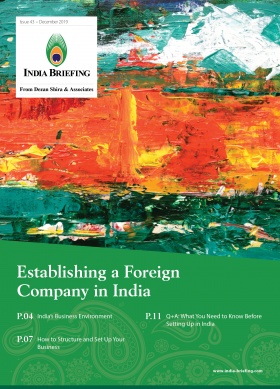Tax Scrutiny in India to Go ‘Faceless’: What Does it Mean?
Tax scrutiny in India will now be managed by randomly allotted tax officers from across the country; a faceless appeals mechanism will be in effect from September 25.
On August 13, Prime Minister Narendra Modi announced that tax scrutiny in India will benefit from a faceless assessment scheme. The move will result in cases of tax scrutiny getting allotted to tax officers from any part of the country – removing concerns of undue bias, harassment, or scope for abuse. Modi said, “Under this system, a taxpayer will not have an opportunity to know people in the tax department or exert influence.”
Subsequently, the country’s tax body, the Central Board of Direct Taxes (CBDT), directed its tax officers to process new assessment orders through the National e-Assessment Center (NeAC). The Center was launched in October 2019, with a small selection of cases for scrutiny.
In another related development, the assessment of tax returns and conduct of surveys will now be administered by different units of the tax department.
Exceptions to the new faceless assessment scheme are cases involving serious fraud, major tax evasion, the Black Money Act, and Benami property.
What is the scheme and how does it work?
Under the new scheme of faceless assessment – the interface between the taxpayer and income tax department will be replaced by technology. The new tax assessment system will thus not operate on the basis of territorial jurisdiction. For example, the taxpayer may be from Delhi, but their assessment and final review will take place in different cities. Assessment cases – entailing investigation of tax returns – will be assigned to randomly allotted tax officers.
A faceless appeal mechanism is also expected to get launched as part of the new expanded assessment scheme from September 25. Appellate decisions will be team based and subject to review, promoting transparency.
Traditionally, the income tax department notifies an assessee once they have filed their tax returns and also in case there is a discrepancy in the processing of the assessee’s return (disclosure of income and taxes owed) and/or conclusion of assessment, the latter resulting in scrutiny, which in turn requires action on the part of the assessee. Under the prevailing system, this would result in a meeting with the assessing officer.
On August 20, 2020, the CBDT announced the Centralized Communication Scheme (CCS), which states that all communication will shift to an electronic mode.
How will it impact businesses?
Tax departments in India have gained notoriety over the years due to their combined authority in any city/jurisdiction to scrutinize, notice, survey, or confiscate assets tied up over tax assessment.
The Modi administration is keen to change this outlook but also strengthen India’s tax regime. It considers making the transition to a technology-based platform as necessary to reduce pain points in the system while also making it as simplified as possible. There appears to be conviction from the top that the default view of the tax department must be fair and objective than assume wrongdoing and incompliance on the part of taxpayers.
Tax professionals are, however, concerned about the data requirements that such an online system would generate – potentially complicating the process for larger firms with more complex business arrangements. The transition from being able to explain one’s status to an assigned income tax officer to dealing with a faceless system may also trigger unease in the beginning.
About Us
India Briefing is produced by Dezan Shira & Associates. The firm assists foreign investors throughout Asia from offices across the world, including in Delhi and Mumbai. Readers may write to india@dezshira.com for business support in India.
- Previous Article Industrial Licensing in India: Norms and Policy
- Next Article Navigating Different Types of Due Diligence in India







